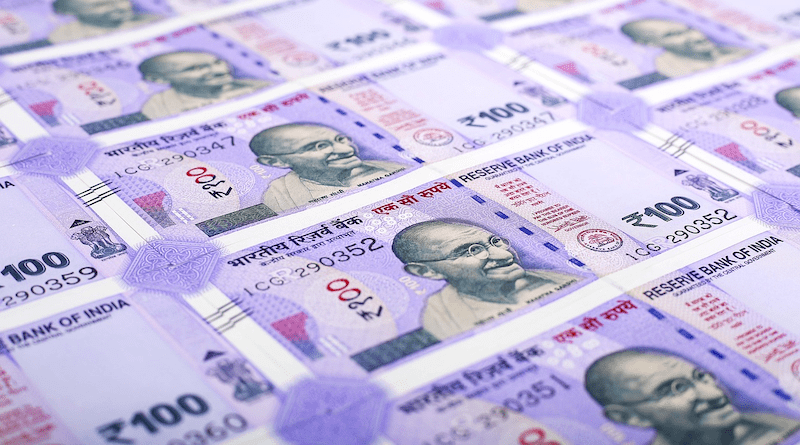Biswajit Dhar

Judging by its macroeconomic indicators, the Indian economy performed well during 2023. In January 2024, the country’s National Statistical Office estimated that the growth in India’s real GDP would be 7.3 per cent during the 2023–24 financial year — the highest among the major economies.
This estimate is higher than the IMF’s December 2023 projected growth of 6.3 per cent. Even if the IMF’s projections prove accurate, India’s GDP would still expand at least two percentage points more than China’s.
Substantially higher levels of capital formation are driving India’s growth during the 2023–24 fiscal year. The government prioritised capital spending in its recent budgets and supported the state governments for doing so. As a result, gross capital formation increased by over 11 per cent during the 2022–23 fiscal year and is expected to expand by over 10 per cent during the 2023–24 fiscal year.
The private sector’s response to the government’s investment push has been inadequate, contradicting the Finance Minister’s expectations that public investment would crowd-in private investment. Private investment fell from over Rs 14 lakh crore (US$168.6 billion) in February 2023 to below Rs 2 lakh crore (US$24.1 billion) in October 2023 before recovering marginally to Rs 2.2 lakh crore (US$26.5 billion) in December 2023.
Simultaneously, foreign direct investors reduced their participation in India. Between April–November 2023, gross foreign direct investment inflows declined by about 4 per cent compared to the corresponding period in 2022. Despite this decline, India seems to have performed better, as foreign direct investment inflows in developing countries declined by 12 per cent in 2023, according to the UN Conference on Trade and Development. An area of concern for India is the high level of disinvestment — increasing nearly 29 per cent year-on-year.
The tepid response from private investors is concerning, as the government will be unable to sustain high levels of capital spending while also addressing development deficits through spending on social sectors and welfare schemes.
The focus on capital spending has caused a relative neglect of these sectors in recent budgets. The government’s shift toward welfare schemes was clear from its 2023 decision to provide free grains to around 810 million impoverished people — about 60 per cent of the country’s population — until December 2028.
The high proportion of the poor population makes it imperative for India to maintain a relatively low level of inflation. The government expects retail headline inflation to be marginally higher in 2024 at 5.4 per cent, increasing from about 4 per cent in 2023.
The Reserve Bank of India previously argued that inflation would remain above its target of 4 per cent in 2024, stating that its ‘objective of aligning inflation with the target on a durable basis is far from assured’. But the uncertainties in this regard have only increased, with food price inflation reaching 9.5 per cent in December 2023, compared to 4.2 per cent a year before.
The external sector has been impacted by the global economy’s loss of momentum, with exports of goods and services declining during the first nine months of the current financial year. But with imports declining — notably merchandise goods — India’s imbalance on the trade account has reduced by almost 36 per cent compared to the previous year.
While the sharp decline in imports has improved the trade account and will considerably improve the current account, this trend is not a positive development for an import-dependent country. This is especially evident in the steep reduction of critical raw materialsand intermediate goods like raw cotton, fertilisers, coal and crude oil during April–December 2023.
GDP estimates show one area of weakness — the relatively slow growth of agriculture and allied sectors. These sectors grew by less than 2 per cent in the 2022–23, which is half of their growth in the previous fiscal year. Uncertain weather conditions, including uneven distribution of rainfall, adversely affected the performance of these sector.
The expected decline of the growth of agriculture and allied sectors in 2023–24 is a worrying sign for the economy. These sectors must grow consistently and at a significantly higher rate, given the depressed state of farm incomes. Higher incomes in these sectors also bolster demand, which can act as an impetus for the manufacturing and service sectors.
The National Statistics Office predicted that the manufacturing sector will expand by 6.5 per cent in 2023–24, considerably higher than the 1.3 per cent growth in the previous financial year. Though the manufacturing sector is expected to experience favourable growth, some important industries have decelerated between April–November 2023.
Output in the labour-intensive apparel industry declined by over 20 per cent, while the output of computer, electronic and optical products declined by over 15 per cent. The latter is among the industry groups on which the government has pinned its hopes not only for reviving the manufacturing sector but also for positioning India as a major producer of technologically sophisticated products.
As the world’s largest democracy heads for the general election in 2024, its economy presents several challenges for the new government.
No comments:
Post a Comment